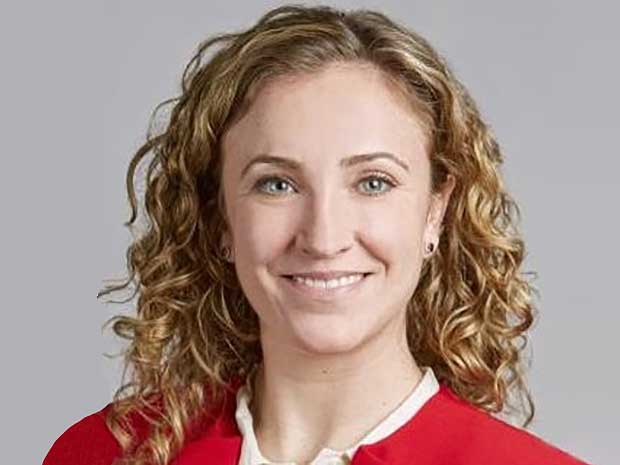Executive summary
Updates for qualified biogas systems. Notable modifications also include clarifications to single project determinations and the One-Megawatt Exception.
Updates for qualified biogas systems. Notable modifications also include clarifications to single project determinations and the One-Megawatt Exception.
On Dec. 4, 2024, the Treasury Department and the IRS published regulations (TD 10015, Final Regulations) finalizing rules related to the Section 48 energy credit, also known as the Investment Tax Credit (ITC), and a portion of Section 6418 that provides for transferring renewable tax credits. The Final Regulations mainly adopt the proposed regulations issued on Nov. 22, 2023 (REG-132569-17, Proposed Regulations) but do make several important modifications and clarifications including:
The provisions of sections 1.48-9 and 1.48-14 apply with respect to property that is placed in service during a taxable year beginning after Dec. 12, 2024. Section 1.6418-5(f) applies to taxable years ending on or after Dec. 12, 2024. Taxpayers may choose to apply sections 1.48-9, 1.48-14 and 1.6418-5(f) with respect to property that is placed in service after Dec. 31, 2022, and during a taxable year beginning on or before Dec. 12, 2024, provided taxpayers follow the sections in their entirety and in a consistent manner.
Section 1.48-13 applies to energy projects placed in service in taxable years ending on or after Dec. 12, 2024, and the construction of which begins after Dec. 12, 2024. Taxpayers may choose to apply section 1.48-13 to energy projects that are placed in service in taxable years ending on or before Dec. 12, 2024, and energy projects placed in service in taxable years ending after Dec. 12, 2024, the construction of which begins before Dec. 12, 2024, provided that taxpayers apply section 1.48-13 in its entirety and in a consistent manner.
Taxpayers that begin construction on an energy project after Dec. 31, 2024, may be eligible for a credit under section 48E, the Clean Electricity Investment Credit. Refer to RSM US’s prior article, Treasury issues proposed regulations for technology-neutral credits.
The Inflation Reduction Act of 2022 (IRA) significantly modified the energy credit determined under section 48 which allows a credit for investment in certified energy technologies. At the time the IRA was enacted, the current ITC regulations had been last amended in 1987. On Nov. 22, 2023, Treasury and the IRS published the Proposed Regulations which represented a significant step in implementing the IRA. Although the Proposed Regulations offered valuable guidance, they also raised numerous questions and concerns for taxpayers. In response, the Treasury and the IRS received a total of 350 written comments. Refer to RSM’s prior article, New IRA energy credit guidance.
Although the Final Regulations largely adopt the Proposed Regulations, they offer important clarifications for owners of specific technologies, including qualified biogas property and geothermal heat pumps systems. Additionally, they provide clarity on certain rules that apply to all taxpayers under section 48.
The Final Regulations address many concerns for taxpayers owning qualified biogas systems including:
The Proposed Regulations initially excluded gas upgrading equipment necessary to concentrate the gas into the appropriate mixture for injection into a pipeline from the definition of “qualified biogas property”. However, on Feb. 16, 2024, the Treasury and the IRS issued a correction. This correction clarified “gas upgrading equipment that is necessary to concentrate the gas from qualified biogas property into the appropriate mixture for injection into a pipeline through removal of other gases such as carbon dioxide, nitrogen, or oxygen, would be energy property if it is an integral part of an energy property.”
In response to significant feedback from the biogas industry, the Treasury and the IRS recognized that the Proposed Regulations, even with the correction, remained too restrictive regarding gas upgrading equipment. The Final Regulations now classify gas upgrading equipment as cleaning and conditioning property. Consequently, taxpayers who invest in and solely own gas upgrading equipment may be eligible for a section 48 energy credit.
The Final Regulations also confirm that certain flaring is permitted, and that the methane content requirement is measured at the point where the biogas exits the qualified biogas property.
Last, the Final Regulations reclassified many components of qualified biogas property. For example, waste feedstock collection system, a landfill gas collection system, mixing or pumping equipment and an anerobic digester are now considered integral parts of the energy property rather than functionally interdependent components. The Final Regulations also allow gas upgrading equipment to be treated as its own unit of energy property based on the specific facts and circumstances. This change resolves many issues caused by the multiple owner rule in the Proposed Regulations, which required a taxpayer to directly own at least a fractional interest in the entire unit of energy.
The Final Regulations confirm that energy distribution equipment and components of a building’s heating and/or cooling system may be integral to the function of the geothermal heat pump systems property to heat or cool a structure. Additionally, the Final Regulations provide an example clarifying that while a taxpayer is required to own both the coils in the ground and at least one heat pump connected to the coils, as the unit of energy property, it is not required to own every heat pump connected to the coils to claim a section 48 credit.
Definition of an Energy Project
The Proposed Regulations would have provided that for purposes of the increased credit amount, the domestic content bonus credit and the increase in credit rate for energy communities, one or more energy properties will be treated as one “energy project” if, at any point during the construction of the multiple energy properties, they are owned by the taxpayer and any two or more listed factors were present.
Overall, commenters expressed a view that the single energy project rule as proposed in the Proposed Regulations would apply to an overly broad range of energy properties and lead to illogical groupings and practical difficulties in complying with various bonus credit amounts and increased credit rates under section 48.
The Final Regulations now require four or more of the listed factors to be present and that the factors may be assessed at the taxpayer’s choice, either at any point during the construction of the multiple energy properties or during the taxable year in which the last such energy property is placed in service.
The Final Regulations clarify that an energy project is considered placed in service on the date the last of the energy properties within the energy project is placed in service and that each energy property within an energy project must be separately reported on Form 3468, two important issues that were previously unaddressed by the Proposed Regulations.
Finally, the Final Regulations do not adopt the Proposed Regulations that would have provided that if multiple energy properties were a single energy project for beginning of construction, then the multiple energy properties would also be treated as a single energy project for purposes of the Prevailing Wage and Apprenticeship (PWA) requirement, the domestic content bonus credit amount, and the increase in credit rate for energy communities.
The Final Regulations have confirmed that the One-Megawatt Exception is applicable solely to the generation of electricity or thermal energy. They also provide detailed guidance on calculating an energy project’s maximum net output when it includes multiple energy properties. Additionally, the Final Regulations offer taxpayers flexibility in determining nameplate capacity for energy properties that generate in direct current and for thermal energy equipment when nameplate capacity is not available.
The Final Regulations also offer additional clarity for projects claiming the section 48 energy credit that must meet PWA requirements.
In addition to modifying and clarifying eligibility for qualified biogas systems and geothermal heat pump systems, the Final Regulations also made important modifications to interconnection property and hydrogen energy storage. The changes to these rules should allow additional properties to qualify under section 48.
While it is important to understand the changes made by the Final Regulations it also important to understand what the Treasury and IRS declined to change, including comments to modify or abandon the 80/20 Rule. The Treasury and IRS also declined to identify in most instances what specific equipment would qualify instead continuing to utilize a functional based approach.
For taxpayers with multiple energy properties, the expansion of the number of factors needed to be met to qualify as an energy project should provide some relief from PWA requirements but may provide challenges for other taxpayer looking to rely on that determination to meet the domestic content bonus credit amount and the increase in credit rate for energy communities.
While the Final Regulations offer much needed clarity and can be seen as taxpayer-friendly, there remains significant gray area regarding the rules and the determination of specific components of various clean energy technologies. For taxpayers who now have the certainty provided by the Final Regulations, understanding how to establish beginning of construction will be crucial to claiming the section 48 energy credit. Additionally, having a deep understanding of how to plan according to the Final Regulations is essential.


Timely updates and analysis of changing federal, state and international tax policy and regulation.
Stay updated on tax planning and regulatory topics that affect you and your business.
Experienced tax professionals track regulations, policies and legislation to help translate changes.